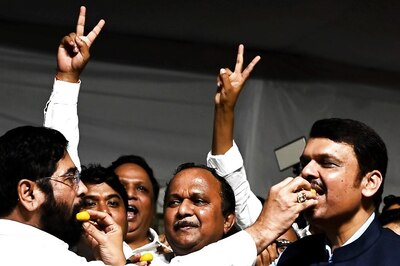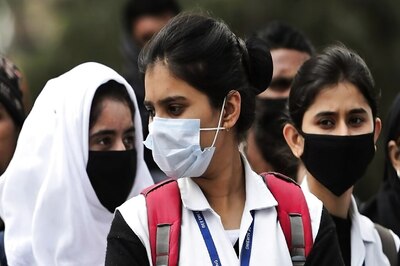
views
In a classic article “Drugs and War: What is the relationship”, writer Peter Andreas, in the Annual Review, Department of Political Science, Brown University, Providence, Rhode Island, USA, examines the theme of what is the relationship between psychoactive drugs and war. The article identifies and traces five key dimensions of this relationship: war while on drugs, war for drugs, war through drugs, war against drugs, and drugs after war. Six drugs have proven to be particularly important: alcohol, tobacco, caffeine, opium (and its derivatives morphine and heroin), amphetamines, and cocaine. They range from old to relatively new, mild to potent, licit to illicit, natural to synthetic. Although they have medical applications, all have become extraordinarily popular and profitable global commodities through their nonmedical use. Today’s battles between rival drug traffickers can be viewed as a form of criminal commercial warfare, made possible by both the criminalisation of drugs and the availability of military hardware and military-trained foot soldiers.
Traditional security scholars may object to classifying this type of organised violence as a war, but the sheer number of deaths and the heavily armed nature of the most powerful players may suggest the need to rethink our conventional definitions of what counts as war. Distinctions between military conflict and criminal conflict can become blurry, especially in terms of lethality, after all, more people have died in Mexico from drug-related violence than in most civil wars. It should be emphasised that the war for drugs can closely interact with and be fuelled by the war against drugs. For example, in the Mexico case, it is clear that the government’s strategy of decapitating major drug trafficking organisations has unintentionally helped to unleash violent turf battles between rival traffickers. When one trafficking organisation has been taken down or weakened by the war against drugs, other trafficking organisations have aggressively engaged in the war for drugs, violently competing for the newly vacated turf—typically meaning control of the major corridors and border entry points.
Another interactive effect is that drug trafficking organisations may launch a war for drugs as a response to a war against drugs, with tactics including the assassination of judges, police, and politicians. Although the standard operating procedure for most drug traffickers is to evade rather than violently confront the state—too much violence can be bad for business by attracting unwanted attention and increasing security costs—the exceptions have included declaring an all-out war on the state. The most famous case was the Medellín cocaine trafficking organisation of Pablo Escobar, whose escalating war against the Colombian government in the 1980s and early 1990s took the lives of hundreds of police officers, dozens of judges, and several presidential candidates. That war only ended when Escobar was tracked down and killed with US intelligence assistance”.
In light of the above, the war against drugs, currently underway in Manipur, can be better understood. Manipur Chief Minister’s ‘War on Drugs 2.0’ has resulted in the seizure of illegal drugs worth over Rs 182 crore in the international market and the arrest of around 140 drug traffickers since March 2020. The law enforcement agencies destroyed a total of 380 acres of poppy cultivation. Manipur occupies an area of 22,327 km² (8,621 sq mi), roughly about the size of the US state of New Jersey. Most parts of the state are mountainous with rugged hills and narrow valleys, except the area around the capital Imphal, where the landscape is flat. This small landscape is inhabited by Chin-Kuki-Mizo-Zomi hill tribes on one side and the Meitei community on the other. The Chief Minister’s War on Drugs has exposed the narco-politics within the state.
According to Manipur government sources, between 2017 and 2018, over 18,664 acres of poppy-cultivated land have been destroyed by state forces, and 963 drug traffickers, including 195 women, were arrested under the NDPS Act between April and June 2019. This has mostly been confined to the hill districts and poppy cultivation is a source of livelihood for many members of the Kuki-Zo-Chin tribes. If 963 drug traffickers have been apprehended in this small State, it gives an indication of the enormity of the narco-politics that it is grappling with. Close proximity of Myanmar, which is a major player in the international drug circuit, adds another dimension, and the involvement of Chinese nationals complicates the drug scenario considerably.
Presently, drug trafficking and poppy cultivation have attained an industry-like status in Manipur, and this means many State government and Central government organisations functioning there have been effectively compromised. The current ‘war on drugs’ has impacted tribes and non-tribes, living off ‘narco-money’, especially the Kuki community, who according to the Chief Minister “are encroaching everywhere, whether reserved forests, protected forests, doing poppy plantations and drugs business”. The April 19, 2023 order of the Manipur High Court directing the State Government to consider granting the Meitei community Scheduled Tribe status, gave the drug lobby a smoke-screen to start a retaliatory attack against the State government’s ‘war on drugs 2.0’. The anti-drugs war of the State Government, got a cosmetic make-over to become a Kuki versus Meitei conflict, whose reverberations are crossing ripples across the Southeast Asian drug circuit.
The Wars on Drugs is also happening in Thailand and in distant Philippines by President Duterte, as also in Bangladesh, Indonesia, Malaysia, and Sri Lanka. In Myanmar, an estimated 50–70% of inmates are in prison on drug charges, and in recent years lawmakers have upheld the use of lengthy prison sentences even for minor drug offences. As an alternative, drug lords of Myanmar, have for long, made Manipur into an Opium cultivation enclave. The poppies are taken to Myanmar through the porous India-Myanmar border, which runs for 1,643 km through the four states of Mizoram, Manipur, Nagaland, and Arunachal Pradesh. The Free Movement Regime (FMR) allows tribes living along the border on either side to travel up to 16 km inside the other country, without a visa. Unfortunately, the Kuki and Chin tribes of Myanmar, misused this provision to occupy the hills and cultivate opium. Decades of unhindered occupation have resulted in a well-oiled narco-trade where opium is cultivated in Manipur and smuggled into Myanmar for processing into heroin and thereafter sent to major Southeast Asian markets. Myanmar’s major drug production centre, the Shan state, which is notorious for the production of illicit heroin, methamphetamine, and yaba, is just 521 km away from Manipur.
The enormously profitable drug production and trade has fuelled ethnic conflicts, criminality, and corruption, which has not been amenable to any kind of control or eradication. Al Jazeera in its report of June 26, 2023, titled “Myanmar authorities burn $446m in illegal drugs”, quoted the head of Myanmar’s Central Committee for Drug Abuse Control, to the effect that its efforts to crush the multibillion-dollar trade were having no impact.
Many observers, therefore, opine that Manipur has also become an extended geographical space of the Golden Triangle. Myriad other problems have cropped up due to poppy cultivation, especially large-scale deforestation, environmental pollution due to unrestricted use of pesticides, and finally culminating in the vociferous demands for a separate Kukiland. Western controlled and appointed foreign missionaries, who had an absolutely free reign in large-scale conversions of many tribes including Kukis, did not have success with the Meiteis, hence their present strategy to expel them from Manipur. Between the 1961 and 2011 censuses of India, the share of Hindus in the state declined from 62% to 41%, while the share of Christians rose from 19% to 41%, reflecting the heightened proselytization that has happened in the State.
The government is not fighting an anti-narcotics war only, but the fight is also against insurgency, foreign missionaries, and the demand for a separate Kuki homeland. The orchestrated international ruckus in the media and social media platforms is a concerted effort to foment large-scale disturbances in the sensitive North-east. The Chinese hand is also prominently discernible in the ongoing violence, as it has designs on dismembering the Northeast from the Indian mainland.
Unfortunately, in India there is always a standard operating procedure for the politicians and media to use religious identities to either obfuscate or highlight or cover up, to sabotage progressive policies and welfare measures. The Manipur anti-drugs war has been deliberately given a colouring of a communal clash between the Christian Kukis who control the drug trade and the Meitei Hindus. The stage-managed chorus being organised by the Western-controlled church and its army of NGOs is to fortify the communal angle. The Kuki drug lords know very well who to be kept on their payrolls. This communal colouring will enable them to successfully sabotage the ongoing war on drugs and keep the illegal narco-trade continuously active.
But, the ‘war through drugs’ is not just a Manipur-centred event, drug trafficking is happening all across the Western land and sea borders of India. From Kashmir to Kerala, there is a silent war brewing, using heroin, cocaine, amphetamines, and ecstasy. Mega seizures are happening routinely, but enforcement agencies are unable to conclude any investigations on time, kingpins remain untraced and peddlers and carriers get out on bail, to resume their next assignment. The drug menace continues to be underpinned by numerous social, political, religious, and economic power determinants.
Political power asymmetries between different States further complicate the problem, thereby portraying national and local enforcement agencies as lacking superintendence or control of their anti-drugs agenda. Hence, many Chief Ministers have cautiously refrained from launching any war on drugs. The Manipur Chief Minister, however, dared to take the bull by the horns and finds himself in a deep quagmire. Before engaging himself in this task, he should have set up an extensive and institutionalised counter-narcotics strategic framework. Any steps to radically alter the drug scenario is bound to unpack secret internal power equations, and hidden nexus between politicians, bureaucrats, foreign-appointed religious heads, and biased media. Local populations that have gotten used to strenuous-free wages and funds will rebel against the unacceptable financial burden that a prohibitionist drug policy will impose. The high financial and human burden of drug war policies and their disproportionate displacement of poor and marginalised communities is a phenomenon globally noticed and accepted.
The war on drugs, and all interventions resulting therefrom, should have been a national programme; a border State like Manipur cannot handle it all by itself. This is the same predicament that is faced by other international border States like Punjab, Kashmir, and Bengal. A lone State embarking on an all-out war on drugs will face a David versus Goliath narrative, one of a small supplicant state challenging the national, international, and inter-State equations enmeshed in the deep complexity of politics and power dynamics and the behemoth corruption that is generated. The scale of the emerging illicit drug markets across India is a warning that we need a national drug control strategy, and a national anti-drug secretariat, to formulate national policies on drug use, drug market economics, and perhaps most importantly to assess the impact of drug enforcement activities. Has there ever been an audit to evaluate the effectiveness of the various drug enforcement agencies functioning under the central and state governments? Has the University Grants Commission, National Assessment and Accreditation Council (NAAC), National Institutional Ranking Framework (NIRF), and Central Board of Secondary Education (CBSE) put in place a Drug-Free Schools and Campuses Act? The answer is the negative.
Much needs to be done to strengthen India’s anti-drug initiatives. Meanwhile, Manipur Chief Minister Biren Singh’s ‘War on Drugs 2.0’ has put him into a Prince Abhimanyu in the Chakravyuha like situation, he is surrounded by a phalanx of vested interests comprising of Western-funded human rights groups, NGOs, fundamentalist religious organisations, powerful drug kingpins, traffickers, Myanmar based drug lobbies, Chinese intelligence agencies, compromised politicians, political parties and weak government institutions. He will need astute statesmanship, diplomacy, and ruthlessness to wriggle out safely.
Dr G Shreekumar Menon IRS (Rtd), PhD (Narcotics), is Former Director General, National Academy of Customs, Indirect Taxes & Narcotics. Views expressed in the above piece are personal and solely that of the author. They do not necessarily reflect News18’s views.




















Comments
0 comment